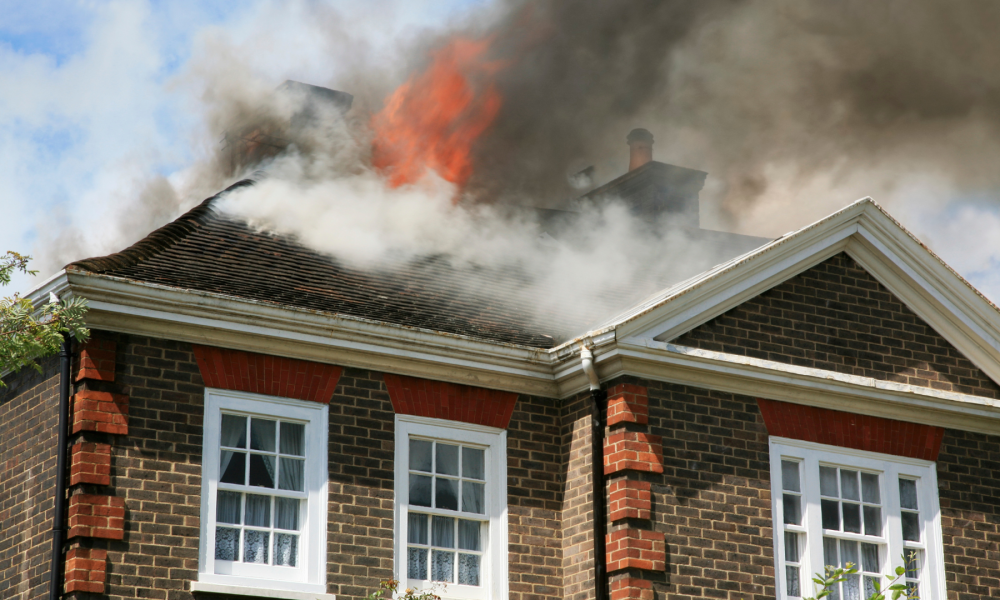If you have a house fire and your insurance company steps in to pay for the damage, destroyed contents and repairs, one issue that many people overlook is the invisible smoke damage to clothing, furniture, carpeting, linens and curtains.
Smoke damage can be extensive and the scent of smoke from the fire can be difficult to eliminate. Often smoke-damaged furniture needs to be thrown out if the soot and residual smoke damage is too great and the cost of cleaning is more than the cost of replacement.
Fortunately, homeowner’s insurance covers all aspects of a home fire, including anything inside the home that is damaged by fire, smoke, soot, ash or other byproducts of fire.
Lingering hazards
All smoke damage is not visible. During fires, toxic smoke, volatile organic compounds (VOCs) and particulate matter are released from the building materials used in your home, the contents of your home and household products that also catch fire.
These chemicals interact with each other to create:
- Carcinogens
- Poisonous gases
- Acids
- Other toxins
Some of the above are so toxic that the Environmental Protection Agency has designated them as having a zero level of permissible exposure limit.
They can cause acute and chronic illnesses, cancer and even death.
Filing the claim
When you file your fire claim, you will need to document all of the damage to your home. While the clearly visible damage will be the easiest to note, smoke damage can be trickier.
Consider filing damage claims for:
- Anything made of fabric that was near the area of the fire that may have been exposed to smoke, or other gaseous compounds.
- Anything that has clearly had a change of color from soot or smoke.
Document all damage and talk to us about the next steps. Sometimes the insurance company can point you to a professional cleaning and restoration company that specializes in smoke damage and restoration.
Whatever you do, do not attempt to clean things yourself. Soot and ash can have lifelong effects on your health, so leave that dirty work to the professionals.
Because of the lingering threat of illness and poisoning, you should be judicious about what you think can be cleaned and what should be thrown out. If you have small children in the house, and their linens and clothing were exposed, it may be best to just file a claim to replace the items because of the potential for hazardous substances that can’t be removed.
Here’s what you should focus on after a fire:
Removing soot from household textiles – Before carpets, draperies, upholstered furniture and clothing can be deodorized or cleaned, the soot must be removed. Because soot is oily, it easily stains items. A professional fire restorer will remove soot with a heavy-duty vacuum.
Removing smoke odors from household textiles – The smell of smoke can stick to upholstered furniture, carpets and curtains unless it is properly deodorized. Professional fire restorers employ a deodorizing process called ozone treatment which breaks up smoke molecules to get rid of the smell.
Removing smoke odors from the home itself – Professional fire restorers can eliminate the smoke odor with a process called thermal fogging, which opens the pores in the walls and neutralizes the smoke odor. There is probably no process a home owner could use that would work as effectively as thermal fogging.
Cleaning household textiles – After deodorizing household textiles, the items can be cleaned. Dry cleanable draperies should be taken to a professional dry cleaner. Some professional fire restorers will clean draperies and upholstered furniture in the home.
Removing odor from clothes – Some clothing may require dry cleaning because of fiber content, dyes used in the fabric or incompatibility of fabrics such as linings and face fabrics. Damaged clothing in closets and drawers can be restored by home cleaning methods. Home laundry methods are most effective for the majority of washable fabrics.
A final warning
Studies have found that simple washing, dry cleaning and ozone treatment will not get rid of many dangerous substances.
One study was of clothing that was exposed to a home fire and which was sent out for ozone treatment, where the clothing was put in an ozone machine for 48 hours.
Once done, the articles which smelled clean were sent to a forensic lab that specializes in testing for chemicals and volatile organic compounds to see if there were any residues left behind. The lab found more than 45 volatile organic compounds still in the clothing, some of which have permissible limits of zero under the EPA.



